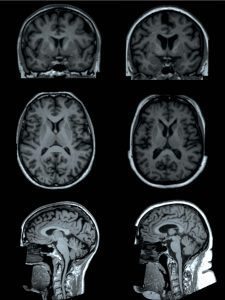Findings Published in the Journal, Radiology
A team of researchers was led by Dr. Ilona A. Dekkers, from the Leiden University Medical Center in the Netherlands. They used advanced MRI scanning technology to identify the connections between obesity and the brain structure. Dr. Dekkers and her colleagues stated that people with obesity had smaller volumes of gray matter than those with normal weights.
Former studies had found a higher risk of cognitive decline and dementia. Dementia is a general term for a decline in mental ability, among humans with excess body fat, especially in old age. Hence, the Doctor and her team decided to examine the connectivity between obesity and the brain. They published their findings in the journal Radiology on April 23 2019.
Extra Body Fat Linked to Brain Shrinkage
A study was published in the online issue of Neurology, the medical journal of the American Academy of Neurology, on January 9 this year. According to it, carrying extra body fat, especially around the middle, may be linked to brain shrinkage. Researchers determined obesity by measuring body mass index (BMI) and waist-to-hip ratio of the study participants. They found that those with higher ratios of both the measures had the lowest brain volume.

Brain scanning procedure was carried out for more than 12,000 participants of the United Kingdom Biobank Imaging study. It gave knowledge about their gray and white matter. According to the scientists, the central processing unit consisted of an “outer cortex of gray matter and an inner area housing tracts of white matter.”
Gray matter contains most of the brain’s nerve cells. Another type of brain tissue, white matter, contains the fibers that connect different parts of the brain. The gray matter is full of neurons. The white matter primarily consists of nerve projections called axons and glial cells. This report strengthened the earlier research outcomes. They also found links of obesity, with brain structure morphology.
Overeating May Cause Obesity and Weight Gain
However, it’s only recently that scientists have started research on the relation between obesity and the brain. Earlier this year, a study revealed that obesity around the abdominal area led to a smaller size of the brain. This meant lower volume of the gray matter. Recent studies have shown the important characteristics behind the effects on the brain size and functionality due to obesity, especially the neurons.
Overeating may be the cause of obesity and weight gain. This makes the brain’s (PFC) prefrontal cortex, the region responsible for our planning, self-control and composite thinking, less active. Another study conducted recently brought up this result.
Apparently, research done in the previous month acknowledged that when a group of neurons become active, they could control overeating. Perhaps, there was an observation that the correlation between percentage of fat and the size of specific brain structures differ according to gender. In obese females, lower brain matter could be seen in the globus pallidus area, which is responsible for voluntary movement. Obese males had lesser gray matter volume in the regions of the brain dealing with movement.
Further Research Necessary
Hildo Lamb, Ph.D., senior author of the study and a U.S. endocrinologist, said that “for future research, it would be of great interest whether differences in body fat distribution are related to differences in brain morphological structure, as visceral fat is a known risk factor for metabolic disease and is linked to systemic low-grade inflammation,”. Dr. Dekkers points out that further research is important to solidify the conclusion. She said that it’s also possible that the brain differences may result from other factors that go hand in hand with obesity. They may be poor diet or lack of exercise, whereas, excess body fat may directly affect the brain.


















